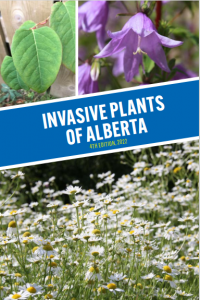Weeds, Pests, and Soil
Agricultural Pests Act and Regulation
The Act provides authority for the minister to declare as a pest or nuisance any animal, bird, insect, plant, or disease is destroying or harming or is likely to destroy or harm any land, livestock, or property in all or part of Alberta. The legislation enables inspectors and local authorities to deal with native and introduced pests and nuisances that affect agricultural production.
Alberta Weed Control Act
This Act aims to regulate noxious weeds, prohibited noxious weeds, and weed seeds through various control measures, such as inspection and enforcement, together with provisions for recovery of expenses in cases of non-compliance. Additionally, it mandates the licensing of seed cleaning plants and mechanisms.
Soil Conservation Act
This Act places responsibility on landowners to prevent soil loss and deterioration from taking place on their property, and grants authority to local governments to appoint soil conservation officers to inspect and respond to these situations. It enables officers to enter onto land at any reasonable time to determine whether soil loss or deterioration is taking place and gives them the authority to issue a notice if no preventative actions are being taken.
Accepting Soil onto Agricultural Lands
As high rates of development occur west of our County, excess soil is being offered to landowners. Wheatland County Agriculture and Environment has prepared a fact sheet that outlines risks associated with accepting such soil onto agricultural lands and methods of mitigating them. It is intended to help support Wheatland County’s agricultural producer in protecting themselves and their neighbours from any unforeseen consequences that may occur. Producers must be vigilant when accepting any bulk soil onto agricultural lands to ensure that productivity is not impacted and weeds and pests are not introduced. We must work together to ensure that the high quality agricultural land base in Wheatland County is maintained.
The fact sheet can be found here.
Wheatland County Pest Inspection and Control Program
Agricultural Services staff conduct annual field inspections and surveys of:
Coyote Predation Control
Assistance is provided to producers for livestock predation occurrences.
Integrated Pest Management
Gall Midges and Seed Weevils have been released along the Bow River for biological control of Scentless Chamomile. Leafy Spurge beetles have also been released at one location within the County.
Pest Control Rental Equipment
- Skunk Traps
- Magpie Traps
View the full list of rental equipment
Seed Cleaning Plants
The ASB is responsible for annual inspection and licensing of three stationary seed cleaning plants located at Strathmore, Hussar, and Rosebud.
Strychnine Program
Wheatland County’s Strychnine Program has been discontinued. Products described in the attached form are not meant to be a complete available list of options. These are not recommendations but are being presented as information to integrate with best practices and effective control for your specific needs and conditions.
To view Strychnine alternatives, click here.
Weed Control Programs
The weed control programs include public and private land weed inspections, education, and roadside spot spraying and mowing. The weed inspector is shared between Wheatland County and the communities of Standard, Hussar, and Rockyford in order to carry out the requirements of the Alberta Weed Control Act in each municipality.
When planting forage seed ask for a certificate of seed analysis, this can help you to prevent weed problems from occurring.
Weed Identification
Find out more information about invasive plants from our new 4th Edition Weed Identification Guide at: Alberta Invasive Species Council.
Our staff are always on the lookout for invasive plants in Wheatland County and are available to work with landowners to mitigate weed problems. Noxious weeds have to be controlled by the landowner or by the person who occupies the land and then prohibited noxious weeds have to be destroyed by the landowner or by the person who occupies the land.

Latest Documents
-
Agricultural Resources and Applications
January 1, 2020
4 attachments
-
Annual Agriculture and Environment Program Updates
January 1, 2020
6 attachments
-
ASB Bursary Application Form
January 1, 2020
-
County Connector
October 29, 2021
19 attachments
